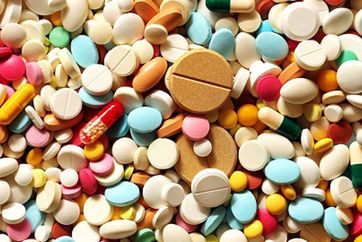Once-weekly dulaglutide shows promise in Chinese adults with type 2 diabetes
Chinese adults with early-stage type 2 diabetes assigned to the weekly GLP-1 receptor agonist dulaglutide achieved lower HbA1c levels with less frequent hypoglycemia when compared with those assigned to daily sulfonylurea therapy, according to findings published in the Journal of Diabetes Investigation.
“Type 2 diabetes is becoming increasingly prevalent in China and other East Asian countries,” Lu Lu Chen, MD, PhD, of the department of endocrinology at Tongji Medical College, Huazhong University of Science and Technology in Wuhan, China, and colleagues wrote. “With increasing rates of obesity (driven by economic development and consequent lifestyle changes), the prevalence and related economic burden of type 2 diabetes in China seems likely to further increase. Therefore, identifying treatment strategies that are effective for Chinese patients with type 2 diabetes is of clear importance.”
Chen and colleagues conducted a post hoc analysis of data from 572 participants (mean age, 53.1 years; 41.5% women; mean diabetes duration, 3.6 years) who took part in a randomized phase 3 study that compared dulaglutide (Trulicity, Eli Lilly) and glimepiride in adults with type 2 diabetes from China, Taiwan and South Korea. According to the researchers, participants were randomly assigned to a gradually increased daily dose of glimepiride (n = 186) or a daily regimen of dulaglutide with doses of 1.5 mg (n = 184) or 0.75 mg (n = 186). Researchers compared HbA1c, self-monitored blood glucose and fasting blood glucose across the three groups at baseline and 26 weeks.
Participants taking 1.5 mg dulaglutide decreased HbA1c by an average of 1.46% during the trial and those taking 0.75 mg dulaglutide decreased the measure by an average of 1.25% compared with an average decrease of 0.92% with glimepiride (P < .01). For HbA1c reduction, these results indicated that dulaglutide was both “noninferior and superior to glimepiride,” the researchers wrote.

An HbA1c level of less than 7% was reached by 71.7% of those taking 1.5 mg dulaglutide compared with 57.5% of those taking glimepiride (P < .01). In addition, an HbA1c level of less than 6.5% was reached by 57.1% of those taking 1.5 mg dulaglutide compared with 40.9% of those taking glimepiride (P < .01). However, the researchers noted that comparisons between those taking 0.75 mg dulaglutide and those taking glimepiride did not yield similar results.
Fasting blood glucose was reduced by an average of 2.29 mmol/L for those taking 1.5 mg dulaglutide, an average of 1.84 mmol/L for those taking a 0.75-mg dose and an average of 1.41 mmol/L for those taking glimepiride (P < .05), with these averages indicating that dulaglutide led to “significantly more pronounced” reductions, according to the researchers. Additionally, those taking 1.5 mg dulaglutide reduced SMBG by an average of 2.94 mmol/L per day compared with an average reduction of 1.9 mmol/L per day for those taking glimepiride (P < .001).
When comparing the three regimens, the researchers did not find a significant difference in treatment-emergent adverse events, although 76 of 100 hypoglycemic events occurred in the glimepiride group.
“Taken together, these findings show that once-weekly dulaglutide monotherapy has a favorable risk-to-benefit ratio and, therefore, might be an effective therapeutic option for Chinese patients who have early-stage type 2 diabetes,” the researchers wrote. – by Phil Neuffer
Disclosures: The study was sponsored by Eli Lilly. Chen reports no relevant financial disclosures. Two authors report they are employees of Lilly Suzhou Pharmaceutical.
